Decans
« Le cycle du ba dans le Rituel de lâEmbaumement P. Boulaq III, 8, 12-8, 16 »
ENiM 2, 2009, p. 9-23.
 Lâanalyse de quelques passages du Rituel de lâEmbaumement (P. Boulaq III) permet de reconstituer le cycle du ba dans un contexte spĂ©cifique de momification et de comprendre la logique des traditions sur lesquelles il se fonde, rĂ©sultant de lâobservation minutieuse de la nature.
Lâanalyse de quelques passages du Rituel de lâEmbaumement (P. Boulaq III) permet de reconstituer le cycle du ba dans un contexte spĂ©cifique de momification et de comprendre la logique des traditions sur lesquelles il se fonde, rĂ©sultant de lâobservation minutieuse de la nature.
 The analysis of some passages of the Embalming Ritual (P. Boulaq III) allows to reconstitute the cycle of the ba in a specific context of mummification and to understand the logic of the traditions on which it is based, resulting from the meticulous observation of the nature.
The analysis of some passages of the Embalming Ritual (P. Boulaq III) allows to reconstitute the cycle of the ba in a specific context of mummification and to understand the logic of the traditions on which it is based, resulting from the meticulous observation of the nature.
 Consulter cet article (89399) -
Consulter cet article (89399) -  Télécharger cet article au format pdf (36883)
Télécharger cet article au format pdf (36883)
« Le Naos des DĂ©cades. Puzzle archĂ©ologique et thĂ©matique »
ENiM 4, 2011, p. 107-136.
 Le Naos des DĂ©cades, dĂ©diĂ© au dieu Chou, est un monument unique par sa collection de textes originaux et par la dĂ©coration extĂ©rieure de ses parois, consacrant une case a chacune des dĂ©cades de lâannĂ©e Ă©gyptienne. Chaque case montre cinq vignettes accompagnant un petit commentaire qui a Ă©tĂ© qualifiĂ© dâ« astrologique », et qui diffĂšre Ă chaque dĂ©cade. Ces notices font intervenir un « grand dieu », dont lâaction vise Ă dĂ©truire les populations ennemies, elles semblent de nature plus mythologique quâastrologique, et leur ensemble pourrait constituer lâun de ces « Livres de Chou » que le dieu confie Ă Sekhmet, faisant le dĂ©compte de ceux que la dĂ©esse et sa troupe de dĂ©cans doivent Ă©liminer. La place du monument dans lâastrologie Ă©gyptienne est discutĂ©e : alors que le commentaire concerne des populations entiĂšres, les vignettes et leurs lĂ©gendes intĂ©ressent le destin individuel et semblent relier le rĂ©sultat du jugement divin et donc lâavenir du ka Ă la position des astres dans le ciel. Ă cet Ă©gard, le monument pourrait reflĂ©ter, ou ĂȘtre le prĂ©curseur des systĂšmes astrologiques prĂ©disant le devenir dâaprĂšs la position variable des planĂštes, du soleil et des dĂ©cans selon les heures.
Le Naos des DĂ©cades, dĂ©diĂ© au dieu Chou, est un monument unique par sa collection de textes originaux et par la dĂ©coration extĂ©rieure de ses parois, consacrant une case a chacune des dĂ©cades de lâannĂ©e Ă©gyptienne. Chaque case montre cinq vignettes accompagnant un petit commentaire qui a Ă©tĂ© qualifiĂ© dâ« astrologique », et qui diffĂšre Ă chaque dĂ©cade. Ces notices font intervenir un « grand dieu », dont lâaction vise Ă dĂ©truire les populations ennemies, elles semblent de nature plus mythologique quâastrologique, et leur ensemble pourrait constituer lâun de ces « Livres de Chou » que le dieu confie Ă Sekhmet, faisant le dĂ©compte de ceux que la dĂ©esse et sa troupe de dĂ©cans doivent Ă©liminer. La place du monument dans lâastrologie Ă©gyptienne est discutĂ©e : alors que le commentaire concerne des populations entiĂšres, les vignettes et leurs lĂ©gendes intĂ©ressent le destin individuel et semblent relier le rĂ©sultat du jugement divin et donc lâavenir du ka Ă la position des astres dans le ciel. Ă cet Ă©gard, le monument pourrait reflĂ©ter, ou ĂȘtre le prĂ©curseur des systĂšmes astrologiques prĂ©disant le devenir dâaprĂšs la position variable des planĂštes, du soleil et des dĂ©cans selon les heures.
 The Naos of the Decades is dedicated to the god Shu. It is a monument unique as to its collection of original texts and the decoration of its outside walls which contains a frame for each of the decades of the Egyptian year. Each of these frames displays five vignettes which accompany a short comment which was qualified as âastrologicalâ, and is different for each decade. These notes call a âgreat godâ for action to destroy enemy populations, and they seem more of a mythological than an astrological nature. The collection of these texts could constitute one of the âBooks of Shuâ which that god entrusted to Sekhmet, establishing a list of those that the goddess and her troop of decans is to eliminate. The position of the monument in Egyptian astrology is arguable: while the comment concerns entire populations, the vignettes and their legends deal with individual destiny and seem to link result of divine judgement and thus the future of the ka to the position of the stars in the sky. In this context, the monument could reflect or precede the astrological systems that foretell the future from the changing position of the planets, the sun and the decans according to the hours.
The Naos of the Decades is dedicated to the god Shu. It is a monument unique as to its collection of original texts and the decoration of its outside walls which contains a frame for each of the decades of the Egyptian year. Each of these frames displays five vignettes which accompany a short comment which was qualified as âastrologicalâ, and is different for each decade. These notes call a âgreat godâ for action to destroy enemy populations, and they seem more of a mythological than an astrological nature. The collection of these texts could constitute one of the âBooks of Shuâ which that god entrusted to Sekhmet, establishing a list of those that the goddess and her troop of decans is to eliminate. The position of the monument in Egyptian astrology is arguable: while the comment concerns entire populations, the vignettes and their legends deal with individual destiny and seem to link result of divine judgement and thus the future of the ka to the position of the stars in the sky. In this context, the monument could reflect or precede the astrological systems that foretell the future from the changing position of the planets, the sun and the decans according to the hours.
 Consulter cet article (54446) -
Consulter cet article (54446) -  Télécharger cet article au format pdf (28613)
Télécharger cet article au format pdf (28613)
« Ciels dâĂgypte. Le « ciel du sud » et le « ciel du nord » »
ENiM 5, 2012, p. 73-102.
 Depuis les temps anciens jusquâaux pĂ©riodes tardives, les Anciens Ăgyptiens, pour dĂ©crire le ciel, distinguaient le « ciel du sud » et le « ciel du nord », aussi bien dans les textes que dans lâiconographie. Les reprĂ©sentations de la voĂ»te cĂ©leste qui apparaissent sur des plafonds ou des couvercles de sarcophages permettent dâidentifier les astres principaux du ciel dit « mĂ©ridional » comme Ă©tant ceux qui se dĂ©placent sur lâĂ©cliptique avec, essentiellement, les Ă©toiles-dĂ©cans qui balisent le parcours quotidien et annuel du soleil. Le ciel « septentrional », quant Ă lui, est le domaine des constellations borĂ©ales, visibles toute lâannĂ©e et, pour cette raison, dĂ©nommĂ©es par les Ăgyptiens « Celles qui ne connaissent pas la destruction ». Lâopposition « spatiale » sâaccompagne dâune opposition « mythologique » : les constellations du ciel du nord sont liĂ©es Ă lâidĂ©e dâimmortalitĂ© car on ne les voyait jamais disparaĂźtre dans la Douat. Ă lâinverse, les ensembles stellaires situĂ©s plus au sud, dont les prototypes sont Sirius et Orion, qui sont absents du ciel un certain temps au cours de lâannĂ©e, sont comparĂ©s aux vivants : ils « vivent » lorsquâils brillent au firmament, et « meurent » lors de leur invisibilitĂ©, qui est ressentie comme un sĂ©jour dans la Douat. Ces observations expliquent de nombreuses allusions retrouvĂ©es dans les Textes de Pyramides.
Depuis les temps anciens jusquâaux pĂ©riodes tardives, les Anciens Ăgyptiens, pour dĂ©crire le ciel, distinguaient le « ciel du sud » et le « ciel du nord », aussi bien dans les textes que dans lâiconographie. Les reprĂ©sentations de la voĂ»te cĂ©leste qui apparaissent sur des plafonds ou des couvercles de sarcophages permettent dâidentifier les astres principaux du ciel dit « mĂ©ridional » comme Ă©tant ceux qui se dĂ©placent sur lâĂ©cliptique avec, essentiellement, les Ă©toiles-dĂ©cans qui balisent le parcours quotidien et annuel du soleil. Le ciel « septentrional », quant Ă lui, est le domaine des constellations borĂ©ales, visibles toute lâannĂ©e et, pour cette raison, dĂ©nommĂ©es par les Ăgyptiens « Celles qui ne connaissent pas la destruction ». Lâopposition « spatiale » sâaccompagne dâune opposition « mythologique » : les constellations du ciel du nord sont liĂ©es Ă lâidĂ©e dâimmortalitĂ© car on ne les voyait jamais disparaĂźtre dans la Douat. Ă lâinverse, les ensembles stellaires situĂ©s plus au sud, dont les prototypes sont Sirius et Orion, qui sont absents du ciel un certain temps au cours de lâannĂ©e, sont comparĂ©s aux vivants : ils « vivent » lorsquâils brillent au firmament, et « meurent » lors de leur invisibilitĂ©, qui est ressentie comme un sĂ©jour dans la Douat. Ces observations expliquent de nombreuses allusions retrouvĂ©es dans les Textes de Pyramides.
 From very early times down to the late periods, the Ancient Egyptians describing the firmament distinguished the âsouthern skyâ and the ânorthern skyâ in their texts as well as in their iconography. Representations of the sky that appear on ceilings or coffin lids permit to identify the main stars in the sky called âsouthernâ as those that move along the ecliptic comprising, in essence, the decanal stars that mark the daily and annual course of the sun. The northern sky, on the other hand, is the domain of the boreal constellations that are visible throughout the year, which is why the Egyptians called them âThose who do not know destructionâ.The âspatialâ opposition is accompanied by a âmythologicalâ one: the constellations of the northern sky are tied to the notion of immortality because they can never be seen to vanish into the Duat. Inversely, the constellations situated further to the south, with Sirius and Orion as prototypes, which are absent from the sky during a certain lapse of time in the year, are compared to the living: they âliveâ while they sparkle in the night firmament and âdieâ during their invisibility, which is perceived as a passage in the Duat. These observations explain a great variety of mythological allusions issuing from the Pyramid Texts.
From very early times down to the late periods, the Ancient Egyptians describing the firmament distinguished the âsouthern skyâ and the ânorthern skyâ in their texts as well as in their iconography. Representations of the sky that appear on ceilings or coffin lids permit to identify the main stars in the sky called âsouthernâ as those that move along the ecliptic comprising, in essence, the decanal stars that mark the daily and annual course of the sun. The northern sky, on the other hand, is the domain of the boreal constellations that are visible throughout the year, which is why the Egyptians called them âThose who do not know destructionâ.The âspatialâ opposition is accompanied by a âmythologicalâ one: the constellations of the northern sky are tied to the notion of immortality because they can never be seen to vanish into the Duat. Inversely, the constellations situated further to the south, with Sirius and Orion as prototypes, which are absent from the sky during a certain lapse of time in the year, are compared to the living: they âliveâ while they sparkle in the night firmament and âdieâ during their invisibility, which is perceived as a passage in the Duat. These observations explain a great variety of mythological allusions issuing from the Pyramid Texts.
 Consulter cet article (53986) -
Consulter cet article (53986) -  Télécharger cet article au format pdf (28607)
Télécharger cet article au format pdf (28607)
« Le dĂ©but du Livre de Nout »
ENiM 7, 2014, p. 79-123.
 Sur le plafond du cĂ©notaphe de Sethi Ier Ă Abydos, le Livre de Nout est prĂ©cĂ©dĂ© de colonnes de hiĂ©roglyphes surmontĂ©es de vignettes. Lâensemble a Ă©tĂ© dĂ©signĂ© comme « Texte de lâHorloge » parce que ces Ă©crits donnent la description dâune horloge Ă ombre accompagnĂ©e dâexplications sur son mode de fonctionnement. Ces textes sont en rapport Ă©troit avec le sujet du Livre de Nout, Ă savoir les exposĂ©s sur le cycle des dĂ©cans, et sur lâutilisation de ces Ă©toiles pour dĂ©terminer les heures de nuit.
Sur le plafond du cĂ©notaphe de Sethi Ier Ă Abydos, le Livre de Nout est prĂ©cĂ©dĂ© de colonnes de hiĂ©roglyphes surmontĂ©es de vignettes. Lâensemble a Ă©tĂ© dĂ©signĂ© comme « Texte de lâHorloge » parce que ces Ă©crits donnent la description dâune horloge Ă ombre accompagnĂ©e dâexplications sur son mode de fonctionnement. Ces textes sont en rapport Ă©troit avec le sujet du Livre de Nout, Ă savoir les exposĂ©s sur le cycle des dĂ©cans, et sur lâutilisation de ces Ă©toiles pour dĂ©terminer les heures de nuit.
 On the ceiling of the cenotaph of Seti I at Abydos, the Book of Nut is preceded by columns of hieroglyphs under vignettes. This collection of texts has been named âText of the Clockâ because it describes a shadow clock together with some explanations concerning functioning. The contents of these columns are closely linked to the Book of Nut, since its subject is the cycle of the decans and the use of these stars to determine the hours of the night.
On the ceiling of the cenotaph of Seti I at Abydos, the Book of Nut is preceded by columns of hieroglyphs under vignettes. This collection of texts has been named âText of the Clockâ because it describes a shadow clock together with some explanations concerning functioning. The contents of these columns are closely linked to the Book of Nut, since its subject is the cycle of the decans and the use of these stars to determine the hours of the night.
 Consulter cet article (60515) -
Consulter cet article (60515) -  Télécharger cet article au format pdf (29685)
Télécharger cet article au format pdf (29685)
« The Astral Myth of Osiris: the Decans of Taurus and Libra »
ENiM 9, 2016, p. 79-111.
 Les diffĂ©rentes formes des deux premiers dĂ©cans qui appartiennent au signe de Taureau dans les zodiaques grĂ©co-romains â femme agenouillĂ©e, cochon, Osiris mort couchant dans un bateau, yeux â renvoient Ă la pleine lune au premier mois de Chemou ainsi quâaux Ă©vĂ©nements cultuels et mythiques qui sây rapportent. Cette coĂŻncidence sâexplique par le fait que le premier mois de Chemou et le sĂ©jour annuel du soleil dans le signe Taureau se superposent au dĂ©but de lâĂre commune. Les dĂ©cans montrant Osiris et les yeux dans le bateau et appartenant au Taureau proviennent Ă©galement des diagrammes astronomiques du Nouvel Empire, qui reprĂ©sentaient aussi un bateau sous le dĂ©can ?r.j-jb-wj? « le milieu du bateau ». Plus tard, ce dĂ©can sera rangĂ© avec le signe de la Balance. Lâanalyse des symboles du dĂ©can dans le diagramme astronomique de RamessĂ©um et dans le zodiaque circulaire de Dendera dĂ©montre, en dĂ©couvrant les couches de significations multiples se rapportant aux images, que la constellation Ă©gyptienne du Bateau Ă©tait identique aux trois Ă©toiles les plus brillantes du signe actuel de la Balance (?, ?, et ? Librae, le dĂ©can ?r.j-jb-wj? Ă©tant lâĂ©toile au milieu, ? Librae). Ce bateau observĂ© dans le ciel jouait un rĂŽle important dans les cosmographies Ă©gyptiennes et dans le mythe astral dâOsiris, car, presque tout au long de lâhistoire de lâĂgypte ancienne, il se situait non loin du point dâĂ©quinoxe dâautomne.
Les diffĂ©rentes formes des deux premiers dĂ©cans qui appartiennent au signe de Taureau dans les zodiaques grĂ©co-romains â femme agenouillĂ©e, cochon, Osiris mort couchant dans un bateau, yeux â renvoient Ă la pleine lune au premier mois de Chemou ainsi quâaux Ă©vĂ©nements cultuels et mythiques qui sây rapportent. Cette coĂŻncidence sâexplique par le fait que le premier mois de Chemou et le sĂ©jour annuel du soleil dans le signe Taureau se superposent au dĂ©but de lâĂre commune. Les dĂ©cans montrant Osiris et les yeux dans le bateau et appartenant au Taureau proviennent Ă©galement des diagrammes astronomiques du Nouvel Empire, qui reprĂ©sentaient aussi un bateau sous le dĂ©can ?r.j-jb-wj? « le milieu du bateau ». Plus tard, ce dĂ©can sera rangĂ© avec le signe de la Balance. Lâanalyse des symboles du dĂ©can dans le diagramme astronomique de RamessĂ©um et dans le zodiaque circulaire de Dendera dĂ©montre, en dĂ©couvrant les couches de significations multiples se rapportant aux images, que la constellation Ă©gyptienne du Bateau Ă©tait identique aux trois Ă©toiles les plus brillantes du signe actuel de la Balance (?, ?, et ? Librae, le dĂ©can ?r.j-jb-wj? Ă©tant lâĂ©toile au milieu, ? Librae). Ce bateau observĂ© dans le ciel jouait un rĂŽle important dans les cosmographies Ă©gyptiennes et dans le mythe astral dâOsiris, car, presque tout au long de lâhistoire de lâĂgypte ancienne, il se situait non loin du point dâĂ©quinoxe dâautomne.
 The different forms of the first two decans that belong to the sign of Taurus in the Graeco-Roman zodiacs â a kneeling woman, a pig, the dead Osiris lying in a boat, and a pair of eyes â are shown to refer to the full moon in the month I Shemu, and the cultic and mythological connotations of this event. The basis of this connection was the fact that I Shemu overlapped with the sunâs annual stay in Taurus around the beginning of the Common Era. The Taurus decans showing Osiris and the pair of eyes in the barque derive from the New Kingdom astronomical diagrams which depicted a boat under the decan called ?r.j-jb-wj? âthe middle of the boatâ. In the later zodiacs the same decan belongs to the sign of Libra. The analysis of the symbols of this decan in the astronomical diagram of the Ramesseum and in the round zodiac of Dendera, unveiling the multiple layers of signification that have been attached to them, reveals that the Egyptian constellation of the boat was identical with the three brighest stars of the modern constellation of Libra (?, ?, and ? Librae, the ?r.j-jb-wj? decan being the star in the middle, ? Librae). This boat in the sky played a crucial role in Egyptian cosmographies and the astral myth of Osiris because of its closeness to the autumnal equinoctial point throughout much of ancient Egyptian history.
The different forms of the first two decans that belong to the sign of Taurus in the Graeco-Roman zodiacs â a kneeling woman, a pig, the dead Osiris lying in a boat, and a pair of eyes â are shown to refer to the full moon in the month I Shemu, and the cultic and mythological connotations of this event. The basis of this connection was the fact that I Shemu overlapped with the sunâs annual stay in Taurus around the beginning of the Common Era. The Taurus decans showing Osiris and the pair of eyes in the barque derive from the New Kingdom astronomical diagrams which depicted a boat under the decan called ?r.j-jb-wj? âthe middle of the boatâ. In the later zodiacs the same decan belongs to the sign of Libra. The analysis of the symbols of this decan in the astronomical diagram of the Ramesseum and in the round zodiac of Dendera, unveiling the multiple layers of signification that have been attached to them, reveals that the Egyptian constellation of the boat was identical with the three brighest stars of the modern constellation of Libra (?, ?, and ? Librae, the ?r.j-jb-wj? decan being the star in the middle, ? Librae). This boat in the sky played a crucial role in Egyptian cosmographies and the astral myth of Osiris because of its closeness to the autumnal equinoctial point throughout much of ancient Egyptian history.
 Consulter cet article (57617) -
Consulter cet article (57617) -  Télécharger cet article au format pdf (26355)
Télécharger cet article au format pdf (26355)
ENiM 18 - 2025
8 article(s) - 8 octobre 2025.
ENiM 1 à 18 (2008-2025) : 227 articles
5 150 373 téléchargements
10 309 064 consulations.
Index des auteurs

Mots clés

Derniers articles : 
CENiM - Mise en ligne des volumes Ă©puisĂ©s : 
 Anne-Sophie von BOMHARD DĂ©cans Ă©gyptiens, CENiM 23, Montpellier, 2020 — (2020)
Anne-Sophie von BOMHARD DĂ©cans Ă©gyptiens, CENiM 23, Montpellier, 2020 — (2020) 
 Jean-Claude Grenier L'Osiris ANTINOOS, CENiM 1, Montpellier, 2008 — (26 dĂ©cembre 2008)
Jean-Claude Grenier L'Osiris ANTINOOS, CENiM 1, Montpellier, 2008 — (26 dĂ©cembre 2008) 
TDENiM - Mise en ligne des volumes Ă©puisĂ©s : 
 Twitter
Twitter 4120318 visites - 6250 visite(s) aujourd’hui - 86 connecté(s)
© ENiM - Une revue d’égyptologie sur internet
Équipe Égypte Nilotique et Méditerranéenne - UMR 5140 - « Archéologie des Sociétés Méditerranéennes » (Cnrs) - Université Paul Valéry - Montpellier III
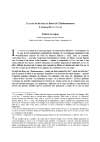
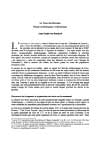
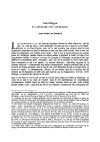
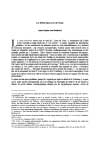
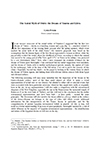





















 Contact
Contact
 Abonnez-vous !
Abonnez-vous ! Équipe Égypte Nilotique et Méditerranéenne
Équipe Égypte Nilotique et Méditerranéenne UMR 5140 « Archéologie des Sociétés Méditerranéennes » (Cnrs)
UMR 5140 « Archéologie des Sociétés Méditerranéennes » (Cnrs) Université Paul Valéry - Montpellier III
Université Paul Valéry - Montpellier III